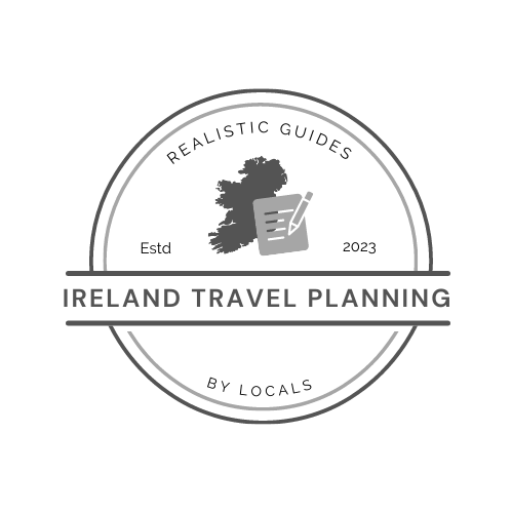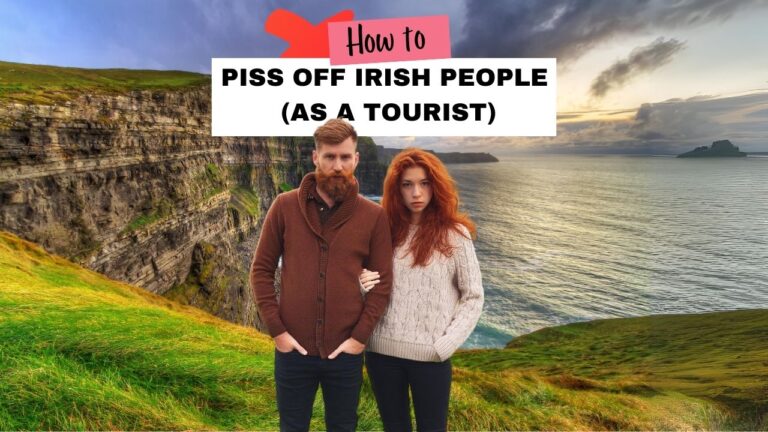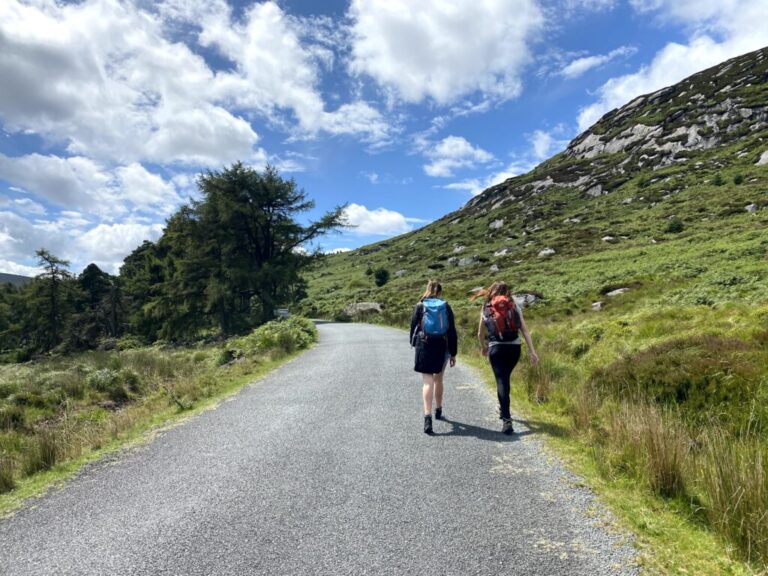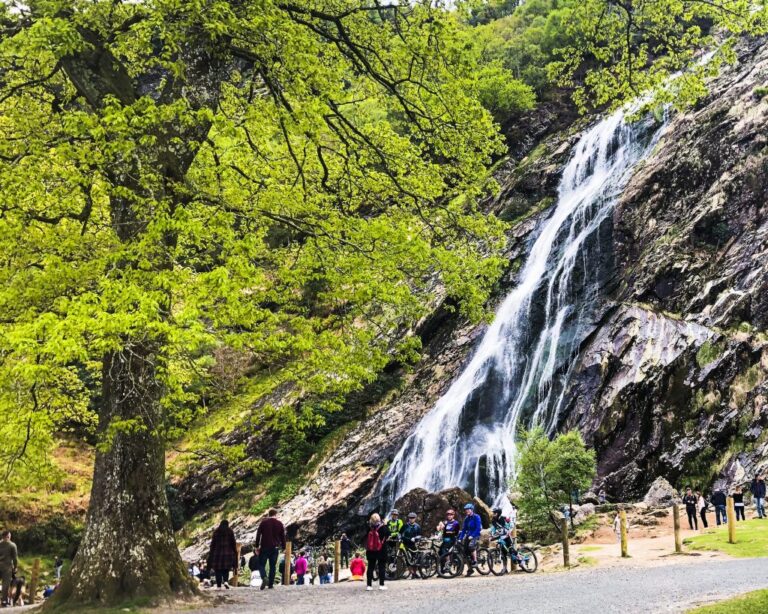Do I Need Cash in Ireland?
Ireland Travel Planning contains affiliate links and is a member of the Amazon Services LLC Associates Program. If you make a purchase using one of these links, I may receive compensation at no extra cost to you. See my Disclosure Policy for more information. Ireland Travel Planning also uses both personal and paid stock photos to illustate posts
As someone who specialises in Irish Tourism, a question I get asked quite often from first time visitors is ‘Do I need cash for Ireland?’.
And, while this answer may have been different a few years back, times have definitely changed. Even more so since the pandemic.
For the most part, Ireland is leaning more towards a cashless society, however, there are a few scenarios when cash is very much still needed.
So, that’s what we are going to discuss in today’s post. We will look at how much cash you will need, where you will need and how best to take it out.
Places You WILL Need Cash in Ireland
If you’re finding yourself a little overwhelmed while planning your trip to Ireland, my advice is to take a deep breath and follow my local advice 😉 Below are some places you may need cash when exploring the beauty of the Emerald Isle.
- Rural Ireland Areas: One of the best things about Ireland is a lot of the amazing landscapes and attractions are located just a stone throw away from some of the countries most remote area’s. Which means that you can truly have an authentic experience without much forward planning. However, this also means that the use of a card payment system could be lacking in some places. Now, for the most part, you’ll be able to use your card or mobile pay services but it is always handy to have a small amount of cash on you just incase you want to buy something is a rural store you pass by on route to your next location.
- Public Transport: The Dublin bus system is a prime example here. They’re still stuck in the “cash only” era unless you have a Leap Card. And let me tell you, when you’ve just landed at midnight and realise the bus only takes coins, you’ll wish you had some change in your pocket. And to add fuel to the fire, they only accept exact change so notes are not an option…
Now, you could let this stress you out…or you could be thankful that you read this post before arriving and order yourself a Leap Card today. You’re welcome 😇
- Tipping: Tipping culture in Ireland is nothing like the US. Leaving something small as a way to say thank you really comes down to personal preference. I think it is nice touch, but again it’s not expected. However, with that being said, if you do decide to leave a tip, you are more than likely going to need cash for it. Certain places like restaurants and taxi’s will have a tip on card option but leaving leaving a thank you note for tours guides or hotel staff is really only possible via cash.
If you want to learn about how to tip in Ireland than I have put together a detailed blog post on the topic. You can read more about it here. - Parking: If you plan on Driving in Ireland then odds are you will need to park your car from time to time. Using cash to pay for parking in Ireland is becoming less and less common with the introduction of card payment options or APPs such as Parking Tag. However, some small and rural still havn’t got an upgraded system yet, so having a few coins will go a long way. And prevent you from being stuck while exploring.
- Honesty boxes: A lot of Irish attractions are located on private land, and on the odd occasion you may be asked to pay a small fee, normally a euro or two to help the owner with the up keep of the land. This is normally paid using a honesty box system which will be left at the entrance to the walk or attraction. The owner is pretty much hoping everyone will be nice and pay for access. However, it’s not uncommon for the owner to be near by or at the entrance.
So, Is Ireland All About Card Payments Now?
In short, yes, for the most part! Since the pandemic, there’s been a massive shift toward contactless payments. Most places you’ll visit—from the bustling streets of Dublin to the quieter quant towns on the West Coast, you can expect to be able to make card payments 95% of the time.
And when I say “card,” I mean Visa and Mastercard. Sorry to any American Express holders out there—your card might get rejected more times than it is excepted.
Even taxis in Ireland now have to take card, it’s a legality, so if they try to tell you otherwise, I suggest finding another driver! As they are trying to rip you off or avoid taxes.
How Much Cash Should You Bring to Ireland?
Here’s the thing, I don’t think you need to bring a lump sum of cash with you to Ireland. Generally speaking, starting off with €100 will do the trick. I’d advise breaking it down into smaller notes, a few €5s, €10s and €20s.
I’d also advise having some coins on hand for the likes of Dublin Bus, old style parking metres and honesty boxes.
But you won’t need cash for the day-to-day stuff it’s more so handy for emergencies.
If you run out of the €100, then the easiest way to get more cash is by using an ATM whcih we will discuss in the next section of this post.
How to Withdraw Euro’s for Your Trip to Ireland?
Exchange It At Home: A ****common way to get cash for your trip to Ireland is pre-exchanging it before you arrive. That way you can avoid international banking fee’s.
Exchange It in Ireland: Or, you can wait to exchange it once arrive in Ireland, although I don’t really recommend these services. They typically charge big fee’s and I struggle to see the benefit in using them unless you already have a lot of cash in your home currency.
Cash Back: Some super markets will offer cash back once you make a card payment in store. I’m not going to lie, this is a system that was really common years ago however it is becoming less and less popular. I havn’t personally tried it in years, but from my understanding supermarkets such as Dunnes and Supervalu still offer it.
ATM’s: Using an ATM has to be the easiest and most straight forward way to get cash in Ireland. There are machines jotted all across the country. Although, you may struggle to find some is extremely rural places. There are also some rules and guidlines to be aware of when using ATMs in Ireland.
- Use Bank ATMs: Stick to ATMs operated by mainstream banks like Bank of Ireland, AIB, Permanent TSB (in the south), and Ulster Bank (in the north). These tend to offer the best exchange rates and minimal fees. You’ll also find some Euro Net Machines, I don’t recommend using these unless you are extremely stuck because they charge A LOT to take money out.
- Avoid Airport ATMs: Yes, they’re convenient, but you’ll likely get hit with higher fees and terrible exchange rates. You’re better off waiting until you’re in town to find a bank ATM.
- Check Your Bank’s Fees: Some banks charge international withdrawal fees, while others might even refund those fees. It’s worth calling your bank before you travel to understand what you’re in for. If you have a card that waives foreign transaction fees, even better!
- Watch Out for Bad Exchange Rates: Some ATMs will offer “no fees” but then give you a terrible exchange rate. It’s a sneaky way to make money off you, so always decline the ATM’s conversion rate and let your own bank handle it.
Paying with Card while in Ireland
Ok, so now that you know that the best way to pay for things in Ireland is via card let’s discuss some important things you should know before your trip.
How Card Payments Work in Ireland: Ireland uses a chip and pin system when you want to pay using a credit or debit card. This means you will insert you card into a reader and enter a 4 digit password to authorise the payment. For those without a chip on your card it is possible to swipe to make a payment but you will more than likely be asked to sign a copy of the receipt to confirm the purchase.
You should always be in possession of your card: Unlike in the US, you should be able to see it at all times. The cashier, waiter or hotel staff member should have no reason to walk off with your card. This is something that should raise alarm bells as it is not done in Ireland.
Contactless Payments: If you have a tap function on your debit or credit card you will be able to make contactless payments on purchases less than €50 by simply tapping the card off the reader.
Mobile Payments: You can also make contactless payments using your mobile phone. Typically, there is no limit for this however individual shops are allowed to make their own rules. This is one of the most common forms of payments in Ireland.
Card Payment Tip: If asked if you want to pay in euros or your home currency. Always state euro if you are looking to save on conversion rates. The other way around will end up costing you extra.
CASH VS CARD in IRELAND: CHEAT SHEET
Ok, so now that we have determined when you will and wont need cash in Ireland let’s summaries some of the key points in this blog post to make it easier to remember before your trip.
So, do you need cash for Ireland? Mostly no, but keep some handy.
- Bring around €100 in small bills and coins.
- Use your card for most payments (Visa and Mastercard are widely accepted, but watch out for foreign transaction fees).
- Need cash? Use a bank ATM, and avoid airport or sketchy ones with bad rates.
- Have cash ready for rural areas, Dublin Bus, honesty boxes and tipping (especially for guides or small services).
- Contactless/mobile payments work almost everywhere, 95% of the time.






